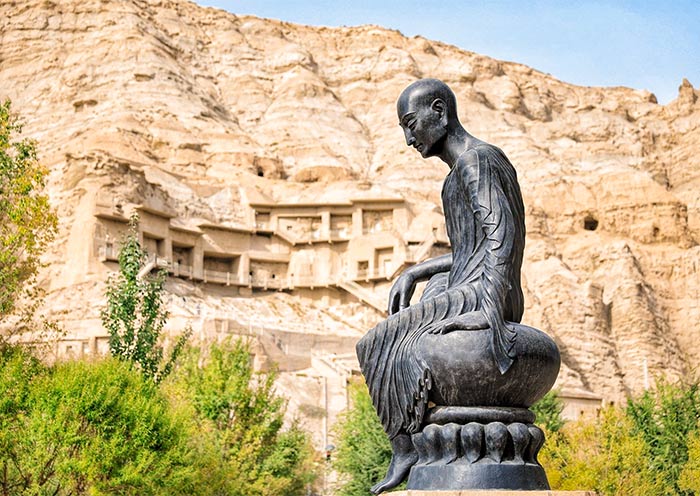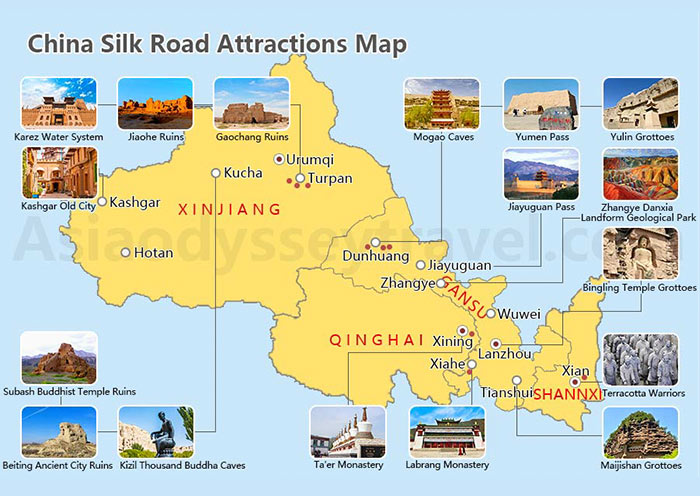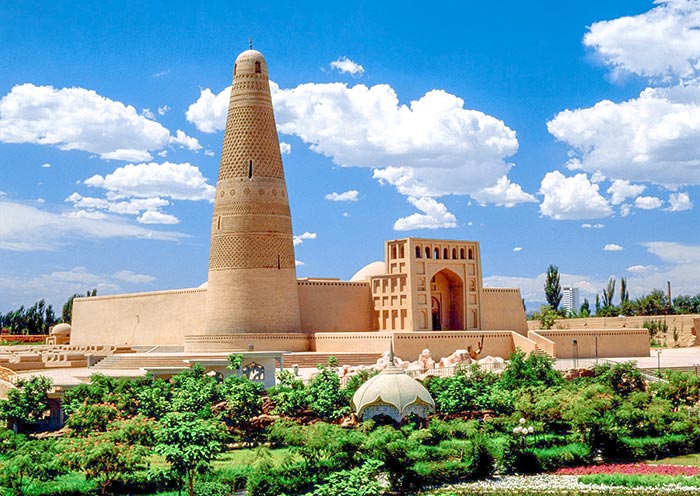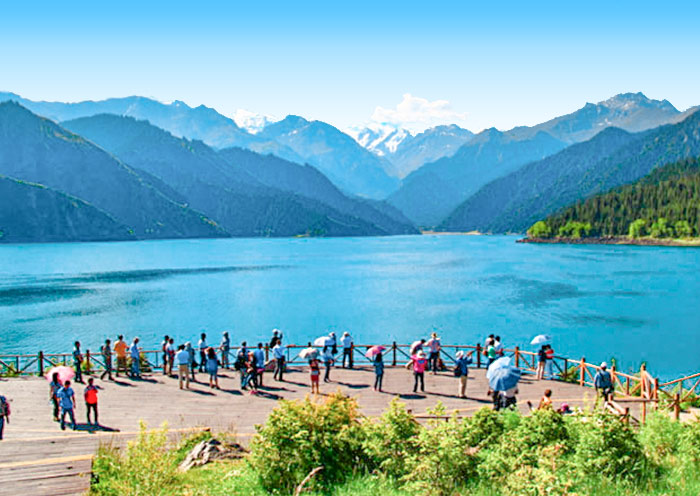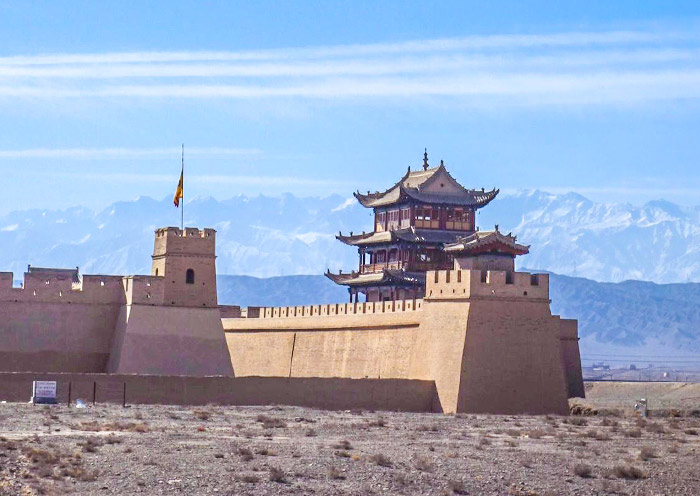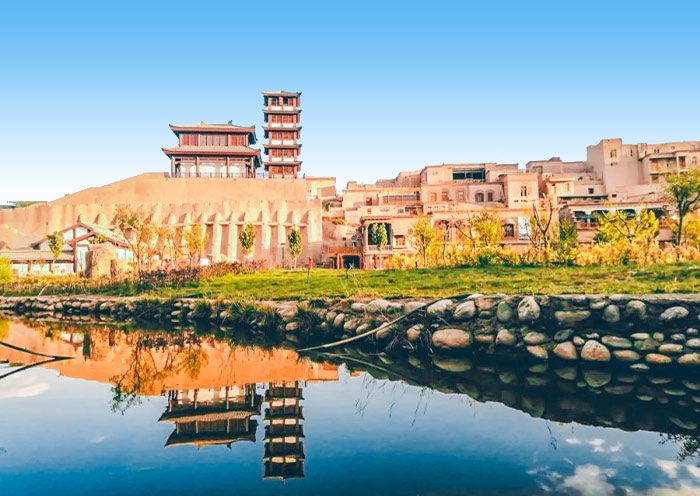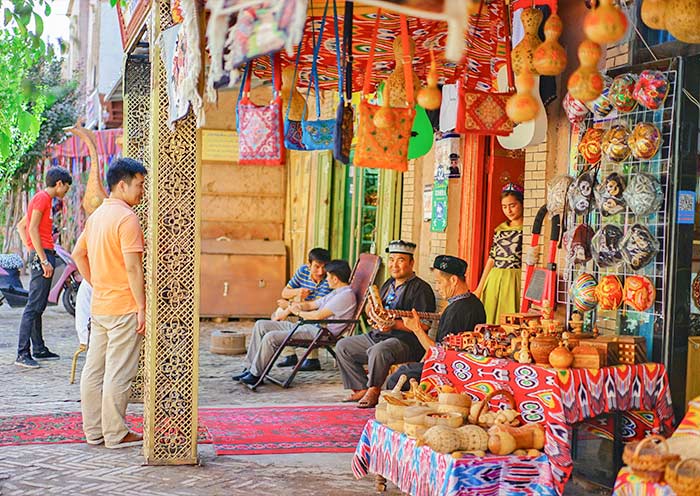1. Where Did the China Silk Road Start and End
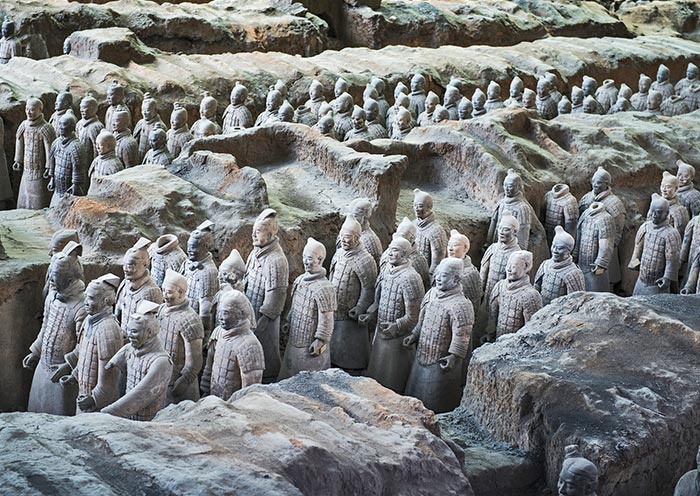
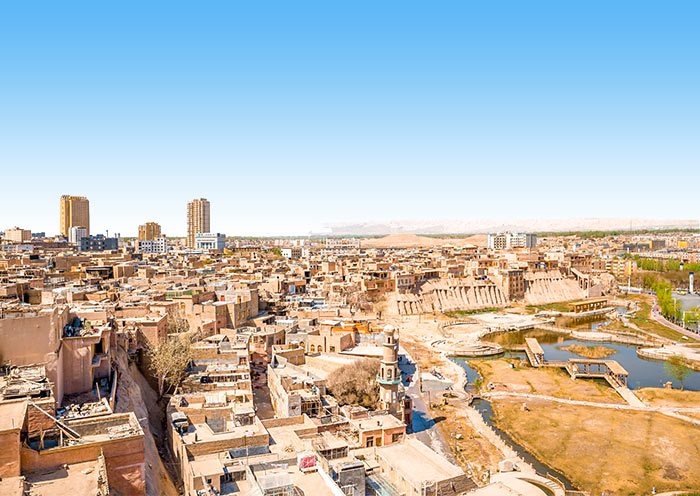
The Silk Road was this epic trade route linking the East to the West, kicking off in Xi'an, which was the heartbeat of ancient China. Back when it was called Chang'an, it was the go-to spot where all the action happened, serving as the capital for a bunch of Chinese dynasties.
This route stretched all the way across China, weaving through awesome spots like Ningxia, Gansu, Qinghai, and ending up in Xinjiang. Kashgar, right out there in the far west of China, is where the trail hits its last note. It's right at this strategic spot where the road forks into the northern and southern routes diving deeper into Central Asia.
Major Silk Road Cities in China
The Silk Road wound its way through a bunch of incredible cities in China, including some must-visit spots like Xi'an, Lanzhou, Zhangye, Dunhuang, Turpan, Urumqi, and Kashgar. These cities are likely to be on your itinerary if you're planning to trace this ancient route.
Here's a quick breakdown of where these cities fall:
- Shaanxi: Xi'an kicks it off as the starting point of the Silk Road.
- Gansu: Check out Lanzhou, Zhangye, Jiayuguan, and Dunhuang – all part of the historic Hexi Corridor.
- Xinjiang: Don't miss Turpan, Urumqi, Kashgar, and Tashkurgan further out west.
2. Why Visit China Silk Road
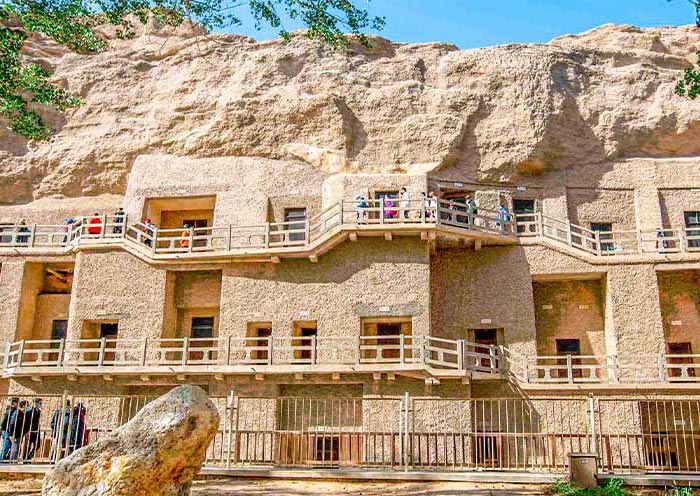

Ancient Cave Marvels
Discover breathtaking sites like the Mogao Caves, Maijishan Grottoes, Bingling Temple, and Mati Temple. These ancient caves are adorned with incredible murals and sculptures, showcasing the region's rich Buddhist heritage and artistic mastery.
Cultural Diversity
Experience the striking contrast and blend of cultures along the Silk Road. From the traditions of the Han people to the unique customs of the Uyghurs and other ethnic groups, the region is a melting pot of languages, cuisines, and lifestyles.
Fascinating Historical Tales
Dive into the captivating stories of historical figures like Zhang Qian, who opened the West, Kumarajiva, the influential Buddhist scholar, and Xuanzang, the monk who traveled to India. Their journeys were pivotal in shaping cultural exchanges along this historic route.
Breathtaking Natural Landscapes
Enjoy the stunning scenery, including vast deserts, vibrant Danxia formations, dramatic Flaming Mountains, and tranquil lakes. These awe-inspiring landscapes provide a perfect backdrop for exploration and photography.
Thrilling Adventures
The Silk Road offers endless adventure opportunities, such as hiking, camping, and even sandboarding in the desert. Whether you're trekking through majestic mountains or setting up camp under the stars, there's plenty to satisfy your adventurous spirit.
3. Attractions & Things to Do along the Silk Road in China
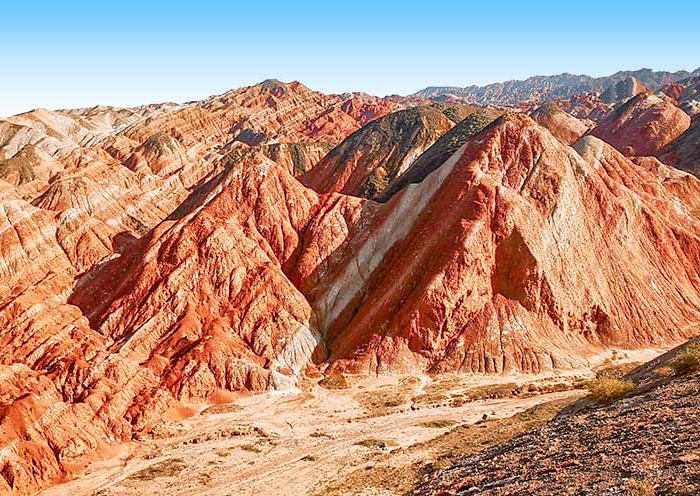
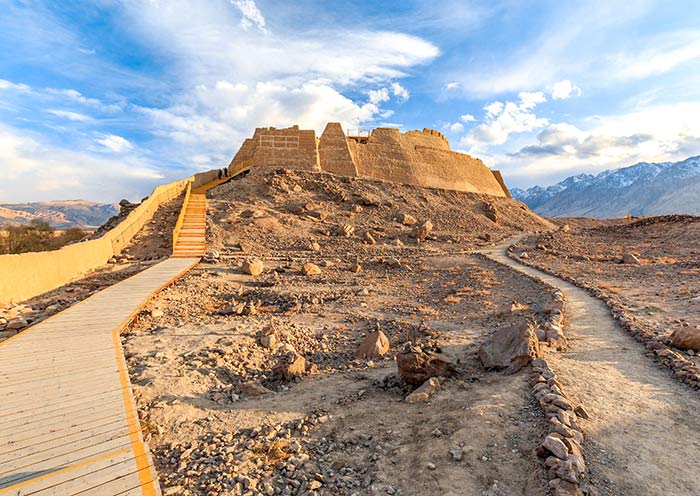
Xian Attractions
| Attractions | Highlights |
|---|---|
| Terracotta Army | Explore the life-sized statues that guard the tomb of China's first emperor, Qin Shi Huang. |
| Xi'an City Wall | Walk or cycle on this well-preserved ancient wall that offers panoramic views of old and new Xi'an. |
| Big Wild Goose Pagoda | Visit this ancient pagoda built to house Buddhist scriptures brought from India via the Silk Road. |
| Muslim Quarter | Explore the heart of Xi'an's Muslim community, established by Silk Road traders. |
| Shaanxi History Museum | Discover relics from Xi'an's past, showcasing artifacts from the Silk Road era to the dynastic periods. |
Things to Do in Xi'an:
- Explore the Terracotta Army
- Walk Along the Ancient City Wall
- Visit the Big Wild Goose Pagoda
- Delve into the Muslim Quarter
- Visit the Shaanxi History Museum
- Experience the Great Mosque of Xi'an
Gansu Attractions
| Cities | Attractions | Highlights |
|---|---|---|
| Zhangye | Zhangye Danxia National Geopark | Breathtakingly colorful rock formations known as the "Rainbow Mountains. |
| Giant Buddha Temple | One of Asia's largest reclining Buddha statues | |
| Mati Temple | A Cave complex known for its intricate cave grottoes and beautiful frescoes | |
| Jiayuguan | Jiayuguan Fort | China's Most Magnificent Border Fort |
| Overhanging Great Wall | A restored section of the Great Wall that dramatically ascends steep ridges | |
| Dunhuang | Mogao Caves | A UNESCO World Heritage site |
| Mingshan Mountain | known for the sound the wind makes when moving over sand. | |
| Yangguan Pass & Yumen Pass | Historic passes once part of the ancient Silk Road |
Things to Do in Gansu:
- Explore the Mogao Caves in Dunhuang.
- Tour the Zhangye Danxia National Geopark
- Visit Jiayuguan Fort
- Camel Trek along the Mingsha Sand Dunes
- Discover the Silk Road Heritage at Yangguan Pass & Yumen Pass
Xinjiang Attractions
| Cities | Attractions | Highlights |
|---|---|---|
| Turpan | Jiaohe Ruins | Explore the remains of a strategic ancient city with well-preserved streets and Buddhist stupas. |
| Karez Water System | Discover this ingenious ancient irrigation system that supports life in the desert. | |
| Urumqi | Xinjiang Regional Museum | Visit to see ethnographic collections and Silk Road artifacts, including mummies and traditional costumes. |
| Heavenly Lake (Tianchi) | Enjoy the spectacular natural beauty of this alpine lake nestled in the Tianshan Mountains. | |
| Kashgar | Id Kah Mosque | Experience the largest mosque in China, central to the religious life of the Uyghur community. |
| Sunday Bazaar | Immerse yourself in the vibrant market atmosphere where goods from spices to silk are traded. | |
| Kashgar Old City | One of the most intact historical Silk Road cities still in existence today | |
| Tashikurgan | Stone City | Explore ancient ruins that served as a major caravanserai on the Silk Road, offering panoramic views of the Pamirs. |
| Karakul Lake | Visit this stunning high-altitude lake, surrounded by majestic peaks, ideal for photography and relaxation. |
Things to Do in Xinjiang:
- Wine Tasting in Turpan: Participate in tasting local wines produced from grapes uniquely adapted to the desert climate.
- Mountain Trekking near Urumqi: Engage in trekking adventures in the scenic Tianshan range, offering fresh air and breathtaking views.
- Cultural Experience in Kashgar: Dive into Uyghur culture through traditional music, dance, and handicraft sessions.
- Explore the Silk Road Heritage in Tashikurgan: Hike around historical sites like Stone City, retracing the steps of ancient traders and explorers.
4. How Long Spend on the Silk Road in China

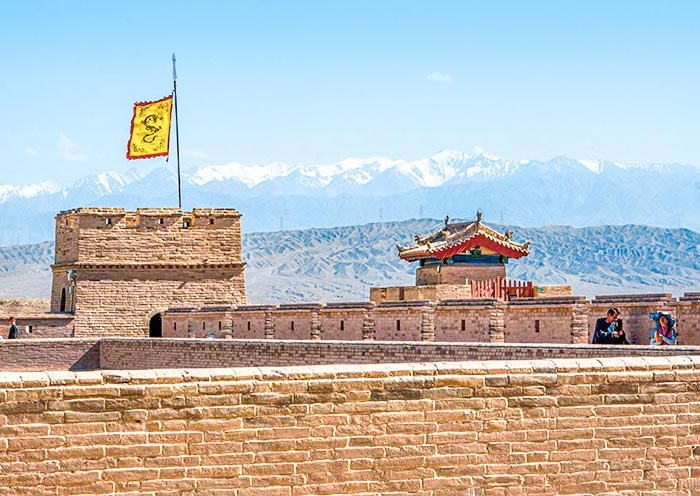
Xi'an (1-3 Days)
Xi'an, as the starting point of the Silk Road, requires about 1-3 days to explore the highlights of this historic city. You'll likely need a full day to check out the world-famous Terracotta Army alone. Then, fill up your itinerary with a stroll along the ancient City Wall, a visit to the bustling Muslim Quarter, a stop at the iconic Big Wild Goose Pagoda, and a tour of the Shaanxi History Museum to see artifacts from the Silk Road.
Gansu (5-6 Days)
Located along the Silk Road, Gansu boasts stunning natural landscapes and a wealth of cultural sites. A Silk Road tour here generally focuses on Dunhuang, Zhangye, and Jiayuguan, with each city deserving around two days of exploration. Spending 5 to 6 days in this province lets you hit several key spots—from the Rainbow Mountains and the Giant Buddha Temple in Zhangye to the Great Wall at Jiayuguan, the Mogao Caves, Crescent Lake, and the ancient gateways of Yangguan and Yumen Pass in Dunhuang. These attractions offer a comprehensive glimpse into the Hexi Corridor essence.
Xinjiang (7-8 Days)
Xinjiang, China's largest province, is crisscrossed with Silk Road history. Even with 7-8 days, you're just scratching the surface. Consider splitting your Silk Road exploration into two routes: a southern cultural route from Turpan to Urumqi to Kashgar and Tashkurgan, and a northern route known for its stunning natural scenery, featuring golden spots like Kanas Lake and the idyllic Hemu Village. Each offers a distinct taste of Xinjiang's vast and varied landscape.
5. Suggested China Silk Road Itinerary: From 5-14 Days


China Silk Road Itinerary 4-5 Days (for Short Stay)
Even if you're short on time, you can still plan a Silk Road trip. For a short stay of 4-5 days, you can probably preview 1-2 Silk Road cities. The most recommended combination is Xi'an and Dunhuang. These are the two superstars of the Chinese Silk Road. Or, you can choose a combination of two popular cities on the Gansu Silk Road, such as Dunhuang and Zhangye.
Here's a 5-day Xi'an-Dunhuang Silk Road itinerary you can refer to:
Day 1: Arrive in Dunhuang
Day 2: Xi'an City Tour (Terracotta Army, Big Wild Goose Pagoda, Great Tang Everbright City)
Day 3: Xi'an to Dunhuang
Day 4: Dunhuang Highlights (Mogao Caves, Mingsha Mountain & Crescent Moon Spring)
Day 5: Depart from Dunhuang
China Silk Road Itinerary 7-8 Days: Gansu/Qinghai/Xinjiang Silk Road
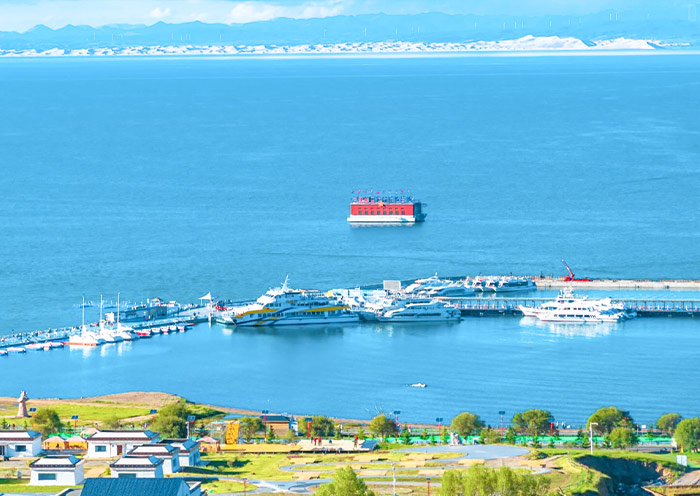
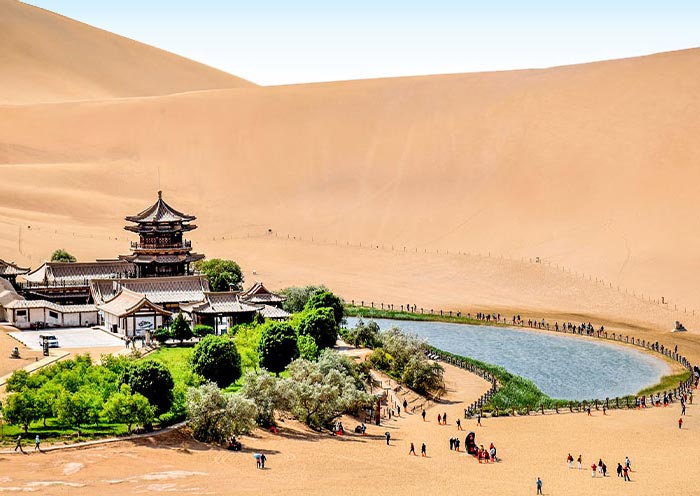
Thinking about a week-long Silk Road adventure? That's plenty of time to dive deep into one of three amazing sections: the Gansu Silk Road, the Qinghai Silk Road, or the Gansu and Xinjiang Silk Road. My top pick? The Gansu-Xinjiang route. You'll get to see firsthand how the Silk Road shaped the Western Regions.
Gansu Silk Road: This classic route takes you through the heart of the Gobi Desert, from the bustling city of Lanzhou to the ancient oasis of Dunhuang. Highlights include Zhangye Danxia National Geological Park, Jiayuguan Pass, and the Mogao Caves.
Qinghai Silk Road: If you're looking for a more off-the-beaten-path adventure, consider the Qinghai Silk Road. Starting in Xining, you'll journey through stunning landscapes, including the Qinghai Lake and the Qilian Mountains, before reaching Dunhuang.
Gansu and Xinjiang Silk Road: For a truly epic adventure, combine the best of both worlds with a trip that spans both Gansu and Xinjiang provinces. This route will take you from the ancient city of Dunhuang to the bustling metropolis of Urumqi, and finally to the historic city of Kashgar.
Recommended: Gansu-Xinjiang Silk Road
If you had to choose one, it is recommended the Gansu and Xinjiang Silk Road. This route offers a unique opportunity to experience the cultural and historical diversity of the region.
Here's a sample 8-day itinerary for the Gansu-Xinjiang Silk Road:
Day 1: Arrive in Dunhuang.
Day 2: Immerse yourself in history at the Mogao Caves, then climb the sand dunes of Mingsha Mountain for breathtaking views of the Crescent Moon Spring.
Day 3: Hop on a high-speed train to Turpan.
Day 4: Explore the ancient city of Jiaohe, marvel at the intricate Kanerwell irrigation system, and visit the towering Su Gong Pagoda.
Day 5: Head to Urumqi and visit the stunning Tian Shan Tianchi Lake and the Xinjiang Regional Museum.
Day 6: Take a high-speed train to Kashgar. Explore the vibrant Old City, including the Id Kah Mosque and the Sunday Livestock Market.
Day 7: Embark on a day trip to the Pamir Plateau and visit the beautiful Karakul Lake.
Day 8: Depart from Kashgar.
China Silk Road Iitnerary 10-12 Days: Classic Travel Route from Xining to Kashgar
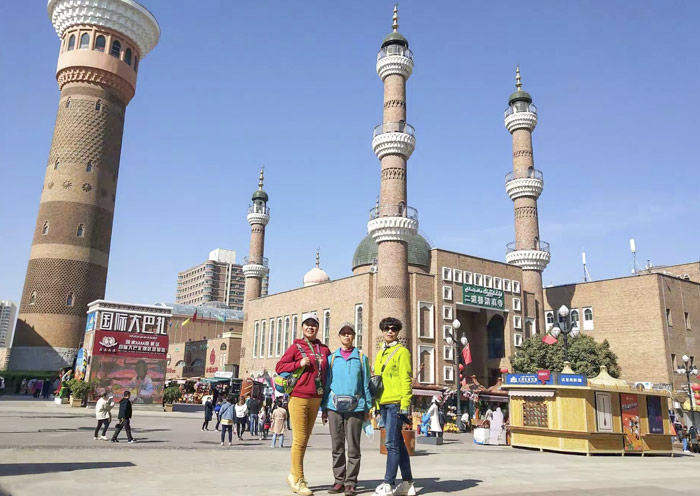
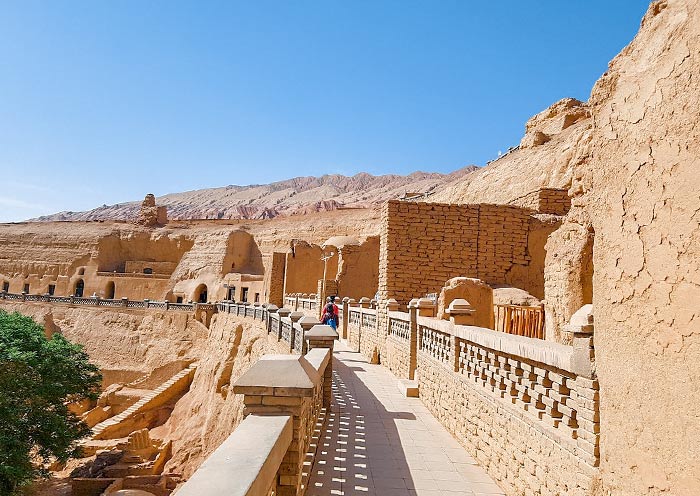
10-12 days is the perfect amount of time to journey from the historic city of Xi'an all the way to the vibrant oasis of Kashgar. This classic route will take you through some of the most iconic cities and landscapes in China.
Here's a quick look at what you can expect on a 10-day Silk Road adventure:
Day 1: Arrive in Xi'an
Days 2-3: Immerse yourself in Xi'an's rich history. Visit the Terracotta Army, climb the ancient city walls, and wander through the bustling Muslim Quarter.
Day 4: Fly to Dunhuang, the gateway to the Gobi Desert. Experience the magic of the Mingsha Mountains and Crescent Moon Spring.
Day 5: Marvel at the ancient Buddhist caves of Mogao and take a high-speed train to Turpan.
Day 6: Explore the historic city of Turpan, famous for its ancient irrigation system and the Jiaohe Ruins.
Day 7: Fly to Urumqi and visit the stunning Tian Shan Tianchi Lake.
Day 8: Journey to Kashgar, the westernmost city on the Silk Road. Explore the vibrant Old City and visit the Id Kah Mosque.
Days 9-10: Embark on a day trip to the Pamir Plateau and marvel at the breathtaking beauty of Karakul Lake.
China Silk Road Itinerary 13-15 Days: Silk Road Deep Exploration
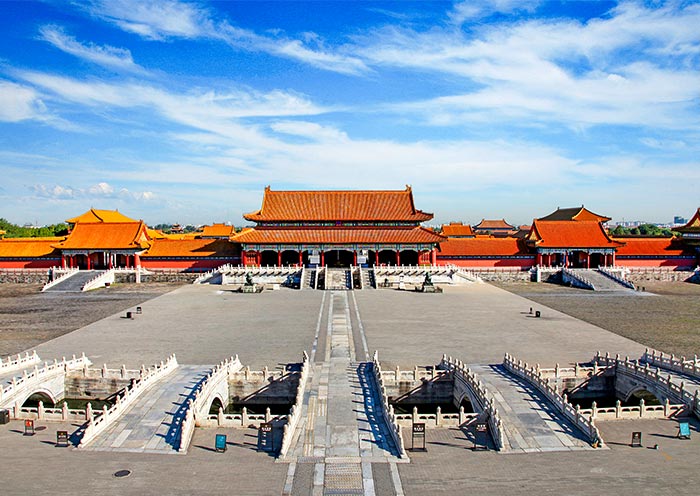
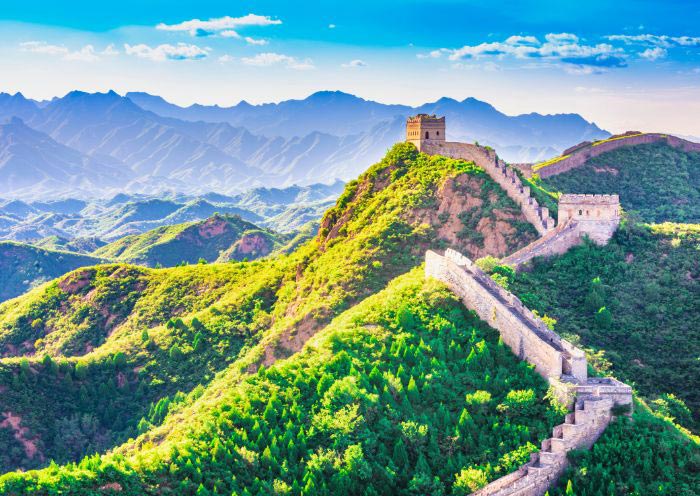
You can explore the China Silk Road in 13 to 15 days and visit as many different spots as possible. Besides the main cities along the way, consider extending your trip to other parts of China, like the historic Beijing, the modern Shanghai, or even the stunning culture and nature of Tibet!
Suggested 13 days Silk Road Itinerary:
Day 1: Arrive in Beijing
Day 2: Explore Beijing - Tiananmen Square, the Forbidden City, Summer Palace
Day 3: Great Wall trip - Mutianyu Great Wall, Bird's Nest, Water Cube
Day 4: Take the high-speed train from Beijing to Xi'an
Day 5: Visit the Terracotta Army, Bell Tower, and Muslim Quarter
Day 6: Explore the Ancient City Wall, visit a local family, see the Big Wild Goose Pagoda, and check out the Tang Paradise
Day 7: Fly from Xi'an to Dunhuang; visit the Singing Sand Mountains and Crescent Lake
Day 8: Dunhuang trip - Mogao Caves (a UNESCO World Heritage site); take the high-speed train to Turpan
Day 9: Explore Turpan: Jiaohe Ancient City (UNESCO site), Karez Irrigation System (a UNESCO engineering heritage), and Sugong Tower; drive to Urumqi
Day 10: Urumqi - Tianchi (Heavenly Lake) - Urumqi (breakfast and lunch included)
Day 11: Fly from Urumqi to Kashgar - Visit Kashgar Old Town (Id Kah Mosque, ancient tea houses) and the livestock market (only on Sundays)
Day 12: Kashgar - Karakul Lake - Kashgar - Enjoy the Pamir Plateau, White Sand Lake, and Karakul Lake
Day 13: Depart from Kashgar
6. Best Time to Visit China's Silk Road
The best time to explore China's legendary Silk Road is from April to October, when the weather is mild, the landscapes are vibrant, and the experiences are unforgettable. Here's a breakdown by season to help you get the most out of each stop along this iconic route.
Spring (March-May): As winter retreats, the Silk Road comes alive with blooming landscapes. In April, visit Luoyang to catch the famous peony blossoms, while Northern Xinjiang's grasslands are dotted with wildflowers, adding a vibrant splash of color.
Summer (June-August): Summer is perfect for adventure seekers. Head to the deserts to explore the vast sand dunes, take a camel ride, or camp under starry skies. Xinjiang's grasslands and lakes are particularly breathtaking, and it's also the season to taste fresh local fruits like melons and grapes.
Autumn (September-November): Autumn is arguably the best season to explore the Silk Road. Zhangye's Rainbow Mountains display their iconic colors vividly, while places like Tianchi Lake and the Populus euphratica forests are at their peak, draped in golden hues.
Winter (December-February): For those drawn to quiet, historical indoor sites and snowy landscapes, winter can be magical. Enjoy the serenity of less crowded museums and temples, and scenic snow-covered Silk Road landmarks.
7. Which Cities to Start Your China Silk Road Trip
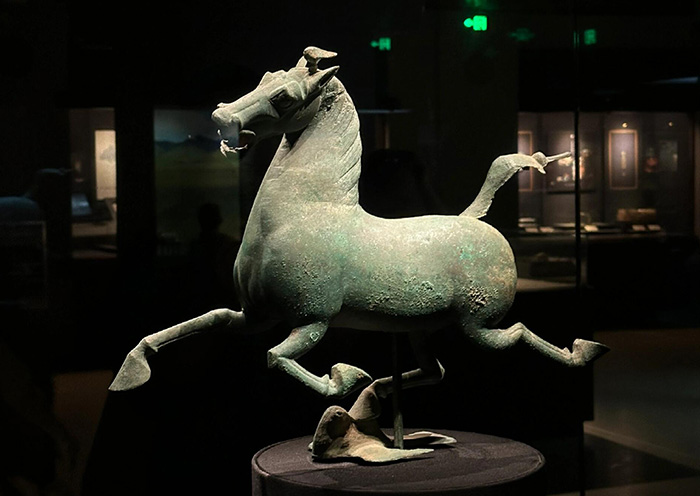
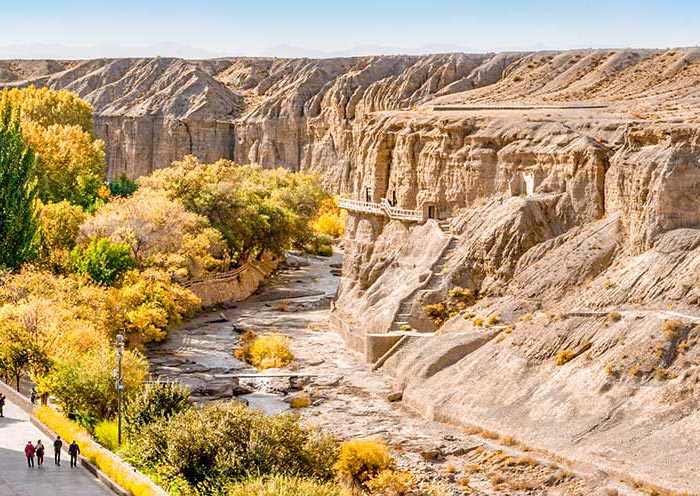
Choosing the best starting point for your Silk Road journey is essential to tailoring the experience you want. Here are some of the top cities to kick off your adventure, each offering unique insights into the Silk Road's history and landscapes.
Xi'an: As the eastern starting point of the Silk Road, Xi'an is packed with cultural treasures. Known for the famous Terracotta Army, ancient city walls, and bustling Muslim Quarter, Xi'an is an ideal place to begin and get a feel for the rich Silk Road heritage.
Lanzhou: Located along the Yellow River, Lanzhou is a great starting spot if you want to explore central Gansu. The Yellow River Stone Forest and Gansu Provincial Museum reveal deeper Silk Road history, while local hand-pulled beef noodles add a delicious taste to your journey.
Dunhuang: Dunhuang is a must-see along the Silk Road, known for its incredible Mogao Caves, which house thousands of ancient Buddhist statues and paintings. You can also visit the stunning Crescent Lake Oasis surrounded by desert dunes and even take a camel ride. Dunhuang is perfect for those who want to explore both cultural relics and desert landscapes.
Urumqi: The gateway to Xinjiang, Urumqi is ideal for travelers eager to experience Xinjiang's breathtaking nature and unique culture. The Grand Bazaar and nearby Heavenly Lake are major highlights, blending Uyghur culture with the beauty of the Tianshan Mountains.
Kashgar: Located at the western edge of China, Kashgar is steeped in Silk Road history. Known for its lively Sunday bazaar and Kashgar Old Town, Kashgar is an excellent starting point for anyone looking to immerse in Uyghur culture and experience the diverse influences of the ancient Silk Road.
8. China Silk Road Transportation
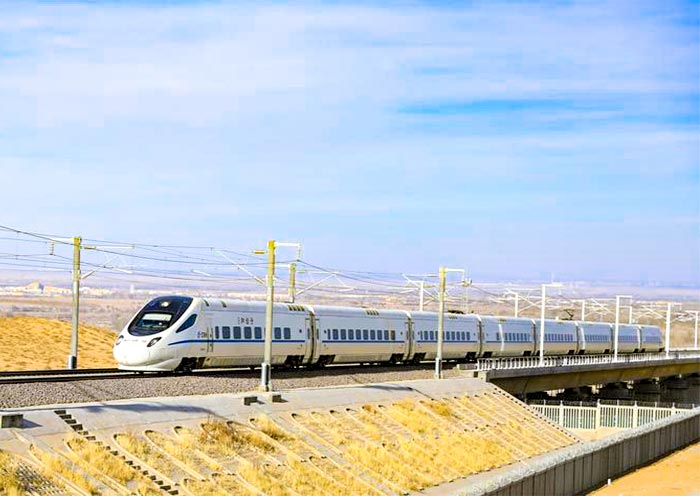

That's why Xi'an, Lanzhou, Dunhuang, Urumqi, and Kashgar are top starting points for a Silk Road adventure. These cities are well-connected by flights from China's major gateways like Beijing, Shanghai, Guangzhou, and Chengdu, making it quick and easy to begin your journey.
Trains: High-speed and regular trains are one of the best ways to explore the Silk Road. They're comfortable and offer stunning views, especially between closer cities. For example, high-speed routes like Zhangye to Dunhuang or Xining to Zhangye make your Silk Road trip super convenient.
Flights: For those short on time, flights are the fastest option for long distances. Most major cities along the Silk Road—like Xi'an, Dunhuang, Urumqi, and Kashgar—have airports with regular domestic flights. Flying from Xi'an to Urumqi, for instance, covers about 2,300 km (around 1,430 miles) in around 4.5 hours, saving a lot of travel time.
Private Car: Renting a car is ideal for reaching smaller towns and scenic spots that trains or planes don't cover. For instance, you can drive to Yumen Pass in Dunhuang or enjoy the scenic route from Kashgar to Tashkurgan.
9. Where to Stay along the China Silk Road
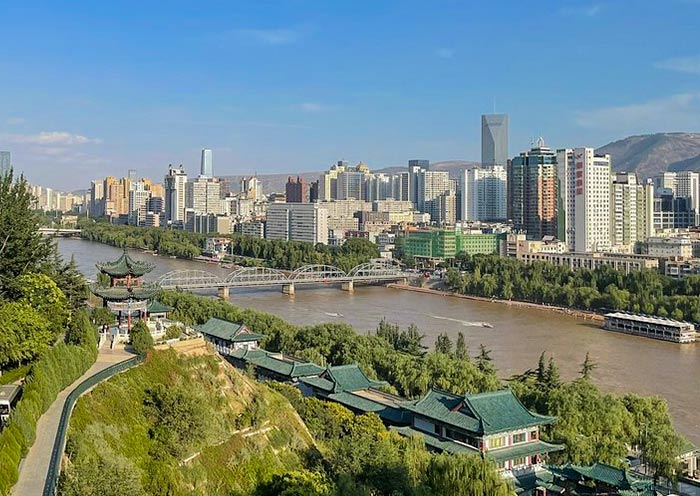
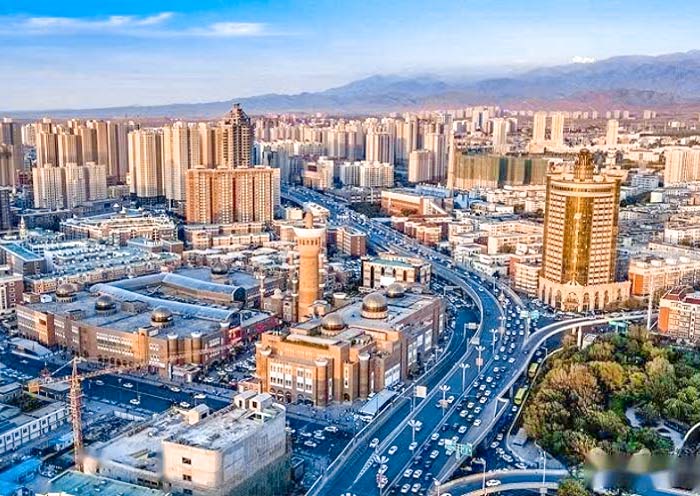
Exploring China's Silk Road offers an array of accommodation options, from budget-friendly guesthouses to cultural boutique hotels and upscale stays.
Xi'an: As the Silk Road's starting point, Xi'an has accommodation to suit every traveler. The Muslim Quarter has affordable boutique hotels near the Bell Tower and Great Mosque.
Lanzhou: Situated along the Yellow River, Lanzhou has a range of mid-range hotels and budget options.
Zhangye: Known for its Rainbow Mountains, Zhangye has guesthouses and mid-range hotels near scenic spots. The Zhangye Silk Road Hotel is a convenient, comfortable choice with easy access to the Danxia Landform Park, perfect for catching sunrise or sunset over the rainbow-colored mountains.
Jiayuguan: As the site of the Great Wall's western end, Jiayuguan offers hotels with great historical atmosphere. Look for hotels near the Jiayuguan Fort; the Jiayuguan Hotel offers comfort with easy access to the fort and Great Wall remnants.
Dunhuang: For those visiting the Mogao Caves, Dunhuang's accommodations reflect its desert charm. The Silk Road Dunhuang Hotel is popular for its traditional decor and scenic views, while budget travelers will find comfortable guesthouses around the city center.
Turpan: Turpan offers a mix of Uyghur guesthouses and mid-range hotels with a cultural touch. Stay in the Grape Valley area, like the Huozhou Hotel, for a relaxed atmosphere surrounded by vineyards.
Urumqi: Xinjiang's capital has luxury hotels like the Sheraton and Hilton, ideal for a comfortable rest after a long journey. For a cultural experience, opt for boutique hotels showcasing Uyghur design and decor.
Kashgar: Kashgar has traditional Uyghur guesthouses and boutique hotels in the historic Kashgar Old Town. The Kashgar Pamir Youth Hostel is budget-friendly, while the Radisson Blu offers a modern stay near the city's famous Sunday Market.
Xining: Known as the gateway to Qinghai-Tibet Plateau, Xining offers both modern hotels and Tibetan-style guesthouses. The Sofitel Xining provides a luxurious stay, while Tibetan-run guesthouses like Lete Youth Hostel offer a cozy, cultural experience.
10. What to Eat along the China Silk Road: Top Silk Road Cuisine


Lanzhou Beef Noodles (兰州牛肉面)
This dish is a must-try in Lanzhou. Made with hand-pulled noodles, tender beef, and a flavorful broth, it's often garnished with green onions and chili oil. The technique of pulling the noodles by hand is an art form, and you can watch it being done in many local shops!
Dumplings (饺子)
Popular throughout China, dumplings are particularly beloved in Xi'an. These little pockets of dough can be filled with a variety of ingredients, from pork to vegetables. Don't miss trying Jiaozi in the Muslim Quarter, where you can find both steamed and fried versions.
Xinjiang Lamb Skewers (新疆羊肉串)
Xinjiang is famous for its delicious lamb skewers, often marinated with spices like cumin and chili before being grilled over open flames. These skewers are not only flavorful but also a cultural experience, best enjoyed at bustling street markets in cities like Urumqi and Kashgar.
Dunhuang Yogurt (敦煌酸奶)
In Dunhuang, try the local yogurt, which is known for its thick and creamy texture. Often served in a traditional clay pot, it's a refreshing treat, especially after visiting the Mogao Caves. Pair it with honey or nuts for added flavor.
Pilaf (抓饭)
A staple in many Central Asian countries, pilaf is also popular in Xinjiang. Made with rice, lamb, carrots, and spices, it's a hearty dish often cooked in a large pot. Each region has its variation, so sampling pilaf in places like Turpan can provide unique flavors.
Biang Biang Noodles (油泼面)
Originating from Xi'an, these wide, hand-pulled noodles are usually topped with a spicy, oily sauce and often accompanied by vegetables and meat. The name itself is a fun tongue-twister, and the dish is a delicious representation of the region's culinary creativity.
11. Packing Tips for China Silk Road: What to Pack
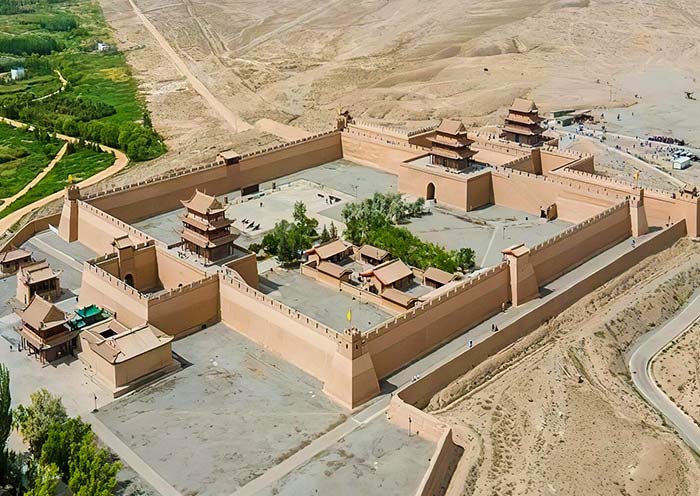
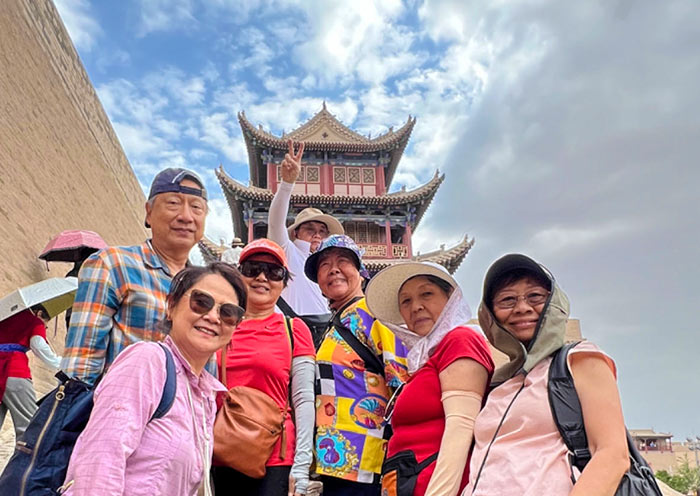
Getting ready to hit the Silk Road? Packing smart will definitely make your trip more enjoyable! First off, bring clothes for all kinds of weather—light, breathable outfits for the day and a warm jacket for cooler nights are a must.
Comfortable shoes are essential too, so you can explore ancient sites and bustling markets with ease. Don't forget sunscreen, a wide-brimmed hat, and sunglasses to protect yourself from the strong sun!
A small backpack is great for carrying your water bottle and snacks during your adventures. For personal care, pack any meds you might need and your go-to toiletries. When it comes to electronics, make sure to grab a universal adapter and a portable charger to keep your phone and camera powered up.
Lastly, keep your passport and visa close, and maybe have digital backups just in case. Bring along your camera to capture all the amazing sights and a journal to jot down your experiences so you can remember this incredible journey!
Travel with Asia Odyssey Travel (AOT) to Explore Silk Road
Travel the historic Silk Road with Asia Odyssey Travel (AOT) and delve into the rich tapestry of cultures and landscapes that shaped the path of trade and civilization. With our deep expertise and over a decade of experience crafting journeys throughout this legendary route, AOT offers tailored tour packages that cater to a wide range of interests and preferences.
Tour Packages: Silk Road Tours, Silk Road Group Tours, China Silk Road Tours, China Northwest Tours, Xinjiang Silk Road Tours
Silk Road Destinations: Xi’an, Lanzhou, Zhangye, Jiayuguan, Dunhuang, Turpan, Urumqi, Kashgar
Popular Attractions: Mogao Caves, Hexi Corridor, Kashgar Old City, Karez System, Tianshan Tianchi, Jiaohe Ruins, Kanas Lake, Qinghai Lake, Chaka Salt Lake, Badain Jaran Desert
Silk Road Travel: Silk Road Travel Guide, Silk Road Cities, Silk Road Trip Planning Guide, Silk Road Itinerary, Silk Road Attractions, Silk Road Map, Silk Road Facts
